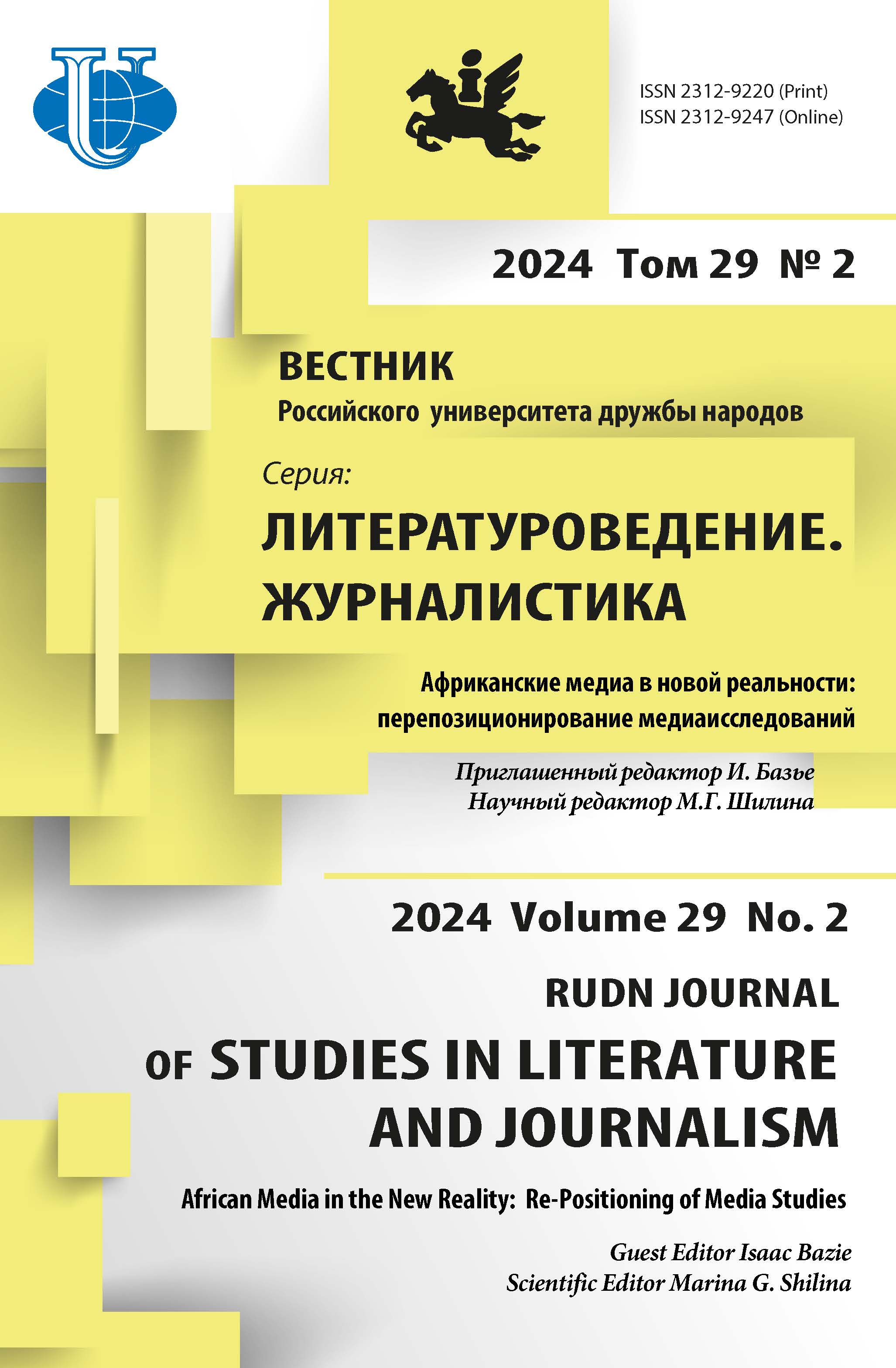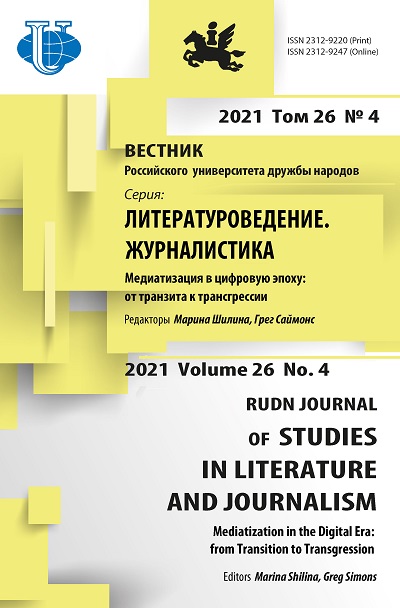Deep Mediatization: Rethinking a Figurational Approach
- Authors: Nim E.G.1
-
Affiliations:
- National Research University Higher School of Economics
- Issue: Vol 26, No 4 (2021): MEDIATIZATION IN THE DIGITAL ERA: FROM TRANSITION TO TRANSGRESSION
- Pages: 664-671
- Section: JOURNALISM
- URL: https://journals.rudn.ru/literary-criticism/article/view/29857
- DOI: https://doi.org/10.22363/2312-9220-2021-26-4-664-671
Cite item
Full Text
Abstract
The article analyzes the possibilities and limitations of the figurative approach to the deep mediatization study, developed by Andreas Hepp and Nick Couldrie. To what extent is figurative theoretical optics sensitive to the processes of social worlds and practices transformation under the media influence? What are the possible directions of revision and further development of this approach? The figurative approach to deep mediatization is a powerful theoretical tool to explore this complex, non-linear meta-process. Focusing on figurations helps to avoid media centrism and emphasize the social life procedurality. At the same time, the figurations concept (understood as collectives, organizations, and institutions) raises some questions. In particular, the thesis about special media ensembles inherent in different figurations does not always work. This is due to the emergence of multifunctional platforms that can become a single digital infrastructure for many figurations. Such platforms have the potential of the ecosystem for a mediatized social life. Further analysis of the relationship between figurations and platforms is required, which does not reduce platforms only to the technological component of figurations. Bridging the deep divide between human actors and technology would also lead to new readings of medialogics (such as human-machine logics).
About the authors
Evgeniya G. Nim
National Research University Higher School of Economics
Author for correspondence.
Email: nimeg@mail.ru
ORCID iD: 0000-0001-7349-9429
Candidate of Sociological Sciences, Associate Professor, School of Media
20 Myasnitskaya St, Moscow, 101000, Russian FederationReferences
- Altheide, D.L., & Snow, R.P. (1979). Media Logic. Beverly Hills, CA: Sage.
- Castells, M. (2009). Communication Power. Oxford: Oxford University Press.
- Couldry, N., & Hepp, A. (2016). The Mediated Construction of Reality. Cambridge, UK; Malden, MA: Polity Press.
- Elias, N. (1978). What Is Sociology? New York: Columbia University Press.
- Hepp, A. (2020). Deep mediatization. London and New York: Routledge.
- Hepp, A., Hjarvard, S., & Lundby, K. (2015). Mediatization: Theorizing the Interplay between Media, Culture and Society. Media, Culture & Society, 37(2), 314-324. doi: 10.1177/0163443715573835
- Hepp, A., & Krotz, F. (2014). (Eds.) Mediatized Worlds. Culture and Society in a Media Age. Basingtoke: Palgrave Macmillan.
- Hjarvard, S. (2013). The Mediatization of Culture and Society. London: Routledge.
- Latour B. (2005). Reassembling the Social. Oxford: Oxford University Press.
- Lundby, K. (2014). Mediatization of Communication. In K. Lundby (Ed.) Mediatization of Communication (pp. 3-35). Berlin: De Gruyter Mouton.
- Nagy, P., & Neff, G. (2015). Imagined Affordance: Reconstructing a Keyword for Communication Theory. Social Media + Society, 1(2), 1-9. doi: 10.1177/20563051 15603385
















